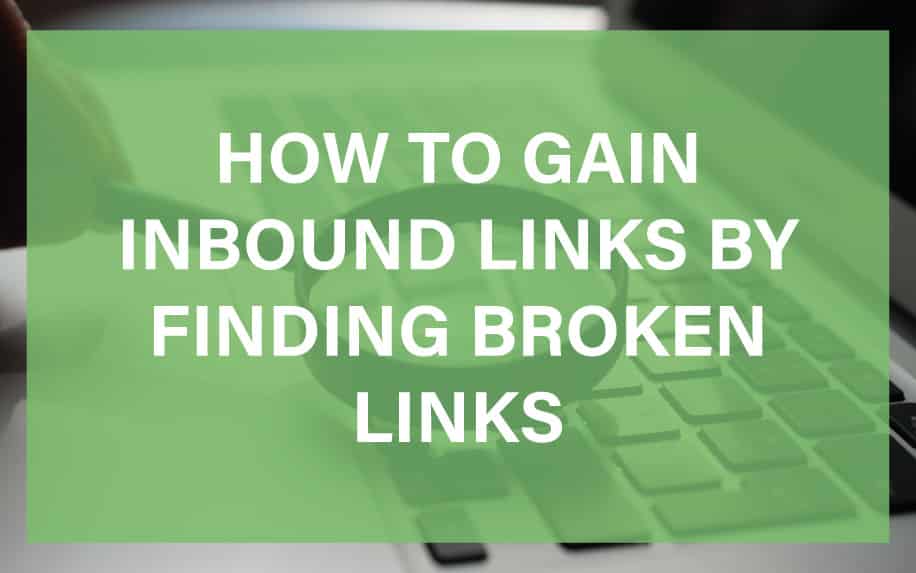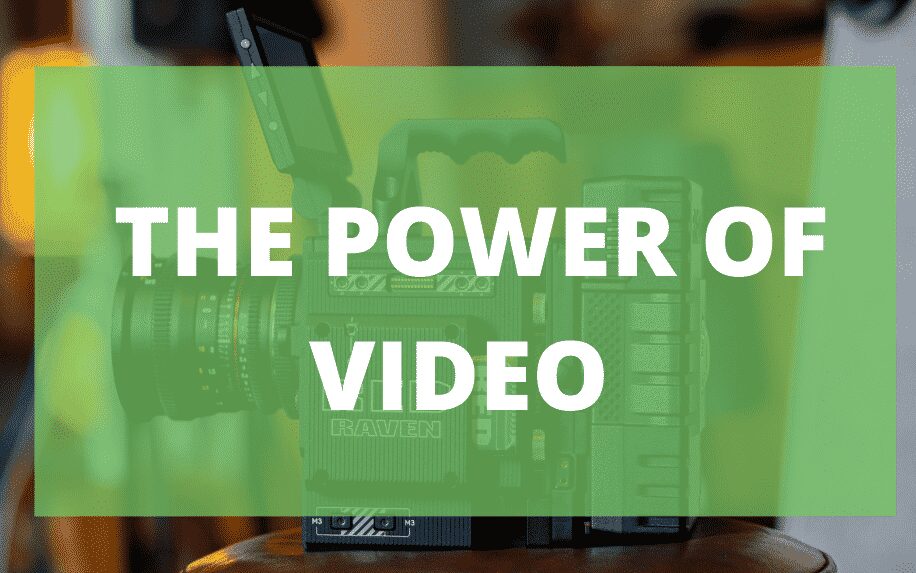Broken links abound on the internet. For instance, researchers found that 39 to 83 per cent of the links in academic journals no longer work. The good news is that website owners can use them to their advantage. Broken link building has become a popular strategy among search marketers. It provides an ethical, spam-free way to gain quality one-way links.
Broken link building is a highly effective SEO tactic that involves finding 404 pages on relevant sites and providing value by fixing those broken links. This comprehensive guide will explore proven strategies for identifying broken link opportunities, prioritizing outreach, conducting campaigns at scale, and earning high authority backlinks to boost your search rankings.
Table of Contents
How it Works
A website becomes less useful and loses credibility when it contains bad links. Its position in search results may also suffer. As a result, webmasters often appreciate learning about outdated links they need to remove. You may benefit from finding a bad link, reporting it and suggesting your website as a replacement. Some promoters employ a few different variations on this strategy.
Finding Broken Link Opportunities
The first step is to locate resource pages that focus on subjects relevant to your website. Moz.com recommends searching for phrases like “recommended resources”, “related websites”, “suggested sites”, “useful websites” and “favourite links.” Combine these terms with one or two keywords describing your website. You’ll find pages that contain numerous links, so there’s a high probability that some of them will be broken.
Discovering broken links on authoritative pages in your industry. Powerful discovery tools include:

- Ahrefs – Set filters for 404 errors under Backlink Checker. Export CSV lists of broken pages.
- Screaming Frog – Crawl sites and export 404 lists from the response codes filter.
- Linkody – Purpose-built for finding broken links. Syncs with Gmail for outreach.
- Manual Search – Site-specific Google searches with “site:example.com 404” can surface broken pages.
Check key competitors, resource sites, and established publications for the best-broken link prospects.
Although search marketers primarily focus on resource or link pages when using this strategy, other types of web content can also offer valuable opportunities. For instance, you might find an outdated link in a news article, blog entry or buying guide. Any relevant webpage with an external link may prove useful.

Prioritizing Potential Targets
With a list of broken links, you must determine the most valuable outreach targets. Prioritize pages that:
- Directly related to your service, product or niche for relevance.
- Reside on authoritative domains with strong trust metrics.
- Have substantial search traffic and keyword opportunities.
- Are strategic fits, like link-building resources for an SEO brand?
- Have social shares, comments, or other signs of reader value.
- Are recently published within the past year.
Crafting Effective Outreach
Your pitch must add value for site owners to earn links. Follow these outreach best practices:
- Personalize each email with specifics on the broken page and your suggestions. No templates.
- Provide context on who you are and why you were viewing their site. Establish credibility.
- Limit links. Offer to send relevant recommendations if they are open to it. Don’t overpitch.
- Be helpful. Links are a bonus, but you’re primarily fixing issues and adding value.
- Include screenshots and specifics when possible. Make it easy for them.
Scaling Campaigns
Manual outreach is effective but time-intensive. Consider automating parts of the process:
- Use software like Linkody, Pitchbox or Mailshake for email sequencing and tracking.
- Automate finding broken links with bots and scripts built for major tools.
- Start with small batch tests and refine processes before scaling.
- Focus manual effort only on the highest value targets and automate the rest.
- Rotate proxy IPs to avoid bot detection if needed when crawling.
Used correctly, automation amplifies the power of broken link building.
Fixing Broken Links: A Practical Guide
- Provide step-by-step guidance on resolving broken links effectively.
- Identifying Broken Link Causes: Explain the common reasons behind broken links, such as page relocations, outdated content, or incorrect link formatting.
- Locating Broken Links: Guide readers on locating broken links through website analytics, error logs, and user feedback.
- Redirecting Broken Links: Provide instructions on redirecting broken links to the appropriate pages using 301 redirects, ensuring a seamless user experience.
- Removing Orphaned Pages: Explain how to identify and remove orphaned pages which have no internal links pointing to them, improving website structure.
Preventing Broken Links: A Proactive Approach
- Emphasize the importance of proactive link management practices to minimize the occurrence of broken links.
- Thorough Link Testing: Encourage thorough testing of links during website development and after making any content or structure changes.
- Regular Link Audits: Recommend scheduling regular link audits to identify and address broken links promptly.
- Content Management System Updates: Ensure regular updates to the content management system (CMS) to prevent link breakage due to software changes.
- Link Monitoring Tools: Utilize link monitoring tools to receive alerts about broken links, enabling quick action to resolve issues.
Testing Process
After locating desirable pages, you’ll find it takes a long time to test each link manually. You can expedite the process using automated software to check for broken links. Examples include Check My Links, Xenu Link Sleuth and Screaming Frog SEO. Double-check a link before reporting it; these programs don’t always supply accurate data.
Contacting Websites
“Broken link building can be VERY rewarding for consistently growing your traffic over time,” according to search optimisation expert Richard Marriott. Nevertheless, only a small percentage of webmasters will decide to create links to your website. It’s vital to use time efficiently. A friendly, well-written email template can help you contact more websites.
Create a polite, concise statement and personalise it for every person you contact. Remember that a lengthy message will often overwhelm recipients. They’ll delete it or put off reading it for a long time. Avoid sending anything that looks like a generic form letter. Try to mention a few details about each website and the specific page with a defunct link.
Most marketers send all of the information in one email message. However, a few people attempt to communicate in multiple steps. You could tell a webmaster about a broken link in the first email. If you get a response, suggest linking to your website and consider introducing other ideas, such as a guest blog post. This technique may be worthy of experimentation.
Some webmasters will appreciate it if you make an extra effort. For example, you could recommend several high-quality replacement URLs for multiple broken links and only include one of your web pages. Another option is to conduct research and tell the proprietor what URL the dead link’s content has moved to. Suggest your link at the same time.
Contact Details
You won’t be able to send a message if you can’t find the right contact information. Look at the resource page’s introduction and conclusion. Some websites put email addresses on their “about us” pages. You may also check for a staff directory. It’s best to send your message to a relevant person and use this individual’s name in the greeting.
- Look for contact info on Facebook “About” pages
- Avoid using long titles; “Dr.” or “professor” is OK
- Start a message with “Hi” if you can’t find a name
You can also try automated “contact finder” software, but it’s unreliable. Occasionally, you’ll find a website offering only postal mail or phone contact details. If you can gain a particularly high-value link, it may be worth the time and expense of using these communication methods. Recipients usually take printed letters far more seriously than email. We have an additional resource here on finding emails.
Prioritisation
During a broken link-building campaign, you should prioritise high-quality web pages that are at least somewhat likely to accept your links. Remember that a link on an unrelated or disreputable website could harm your promotional efforts. Authoritative nonprofit and government websites usually provide the most valuable opportunities. Be sure to look for both broadly and narrowly relevant pages.
Prioritise websites that have been updated recently. If a resource list has remained the same since 1998, the likelihood of a response is low. The person who maintains it may have retired or decided to abandon the list. A page’s popularity also has an impact. The webmaster is likelier to care about broken links that visitors frequently see.
It’s best to focus on web pages with broken outbound links. If you report a bad internal link to another page on the same site, the webmaster may fix it but probably won’t add your link. However, it may be worth a try if you can only find a broken internal link on a highly desirable website. Don’t forget to suggest a suitable page where your link could be added.
Tracking Progress
Keep a list of all the websites you’ve contacted. It’s important to avoid repeatedly sending messages to the same person. This wastes time and could result in “spam” complaints. Consider checking the websites occasionally; people occasionally create links without responding. Add a note to your list whenever you achieve a successful outcome.
If no one responds favourably, consider tweaking your email template. Perhaps it isn’t engaging enough or fails to explain the value of your link concisely. Reevaluate the quality of your webpage as well. Is it thoroughly edited, informative, well-designed and compelling? Many webmasters will only add links to particularly useful or inspiring material.
Advanced Strategies
Consider developing new web content that matches a common broken link. You may use Internet Archive’s “Wayback Machine” to see what the defunct page offers. For example, you may run a website selling AM/FM radios. You notice several websites have dead links to an outdated list of radio stations in London. Think about building a similar page and suggesting it as a replacement.
- Take the time to create detailed, high-quality material
- Surpass the old page with insightful, up-to-date content
- Briefly advertise your product or service at the end
Another technique is discovering if bad links send people to expired domain names. This allows you to register the domain and reestablish webpages at the appropriate URLs. You would need to pay the registration fee and a yearly renewal charge. Nonetheless, it may be worth the expense if an expired domain still has numerous high-quality inbound links.

Rather than manually looking up each domain name, you can use a handy browser extension called Domain Hunter Plus. It automatically searches for bad links and tells you if their domains have expired. This tool even calculates the total number of links to a defunct domain, so you may easily gauge its value.
Broken link building certainly demands considerable time and effort. Nevertheless, it’s one of the more effective ways to gain valuable inbound links without spending money. This strategy also involves comparatively little risk. As long as you keep away from suspicious websites and avoid offering incentives, you’re unlikely to face any search engine penalties.
Hence, the benefits of using one of the best content marketing agencies are clear – you can get an incredible return on investment from content creation. Content Marketing is a strategy that our business uses to generate links to our content and, in turn, attract visitors to the website. This is likely how you arrived here today. If you want to gain inbound links or have other forms of help around your search engine optimisation, copywriting, or developing an optimised website, do contact our team.
Identifying High-Value Broken Links in 2024: Latest Best Practices and Trends
Broken link building remains a valuable SEO strategy in 2024, but identifying high-value opportunities requires staying ahead of the curve. Here are the latest best practices and trends to consider:
1. Data-Driven Targeting with Advanced Tools:
- Beyond basic broken link checkers: While tools like Screaming Frog or Ahrefs are helpful, explore options like LinkMiner, Broken Link Builder, or Check My Links for sophisticated filtering and ranking capabilities.
- Refine your search criteria: Go beyond simply identifying “broken” links. Filter by domain authority, topical relevance, anchor text, and website traffic to prioritize high-value targets.
- Leverage competitor analysis: Use advanced SEO tools to identify broken links within your competitors’ backlink profiles, targeting opportunities where your content offers a clear advantage.
2. Prioritizing Quality and Relevance:
- Content above all else: Don’t just replace broken links with any relevant page. Ensure your content offers superior value, improved user experience, and aligns perfectly with the original topic.
- Focus on topical relevance: Prioritize websites within your niche or closely related industries, creating contextually relevant backlinks that boost SEO power.
- Consider language and region: When seeking international opportunities, target websites in your target language and region for maximum alignment with your audience.
3. Automation and Personalization in Outreach:
- Streamline communication: Utilize outreach automation tools like Zapier or Pabbly Connect to personalize and send emails efficiently without sacrificing individual attention.
- Personalize beyond templates: While templates can save time, tailor each message to the specific website, highlighting the value your content offers and addressing their exact broken link issue.
- Showcase social proof: Include website traffic stats, positive testimonials, or social media engagement metrics to demonstrate the value your content can bring.
4. Building Relationships and Ethical Outreach:
- Prioritize building genuine connections: Engage with website owners on social media or leave insightful comments on their blog posts before initiating outreach.
- Transparency and respect: Clearly explain the broken link issue, showcase your relevant content, and offer it as a valuable solution, not a forced exchange.
- Offer alternative solutions: If a direct replacement isn’t available, suggest other relevant pages on your website that might be beneficial to their audience.
- Comply with Google’s guidelines: Avoid manipulative tactics like link buying or keyword stuffing, focusing on offering genuine value and ethical outreach practices.
Bonus Trends:
- Broken link building for local SEO: Target geographically relevant websites and online directories to improve local search rankings.
- Leveraging HARO queries: Respond to relevant “Help a Reporter Out” queries where your content can replace broken links in upcoming articles.
- Broken image and resource link building: Expand your scope beyond textual links by identifying broken images, infographics, or other resources you can replace with your own high-quality content.
Remember, broken link building is a long-term strategy. Implementing these best practices, prioritizing quality and ethical outreach, and staying updated with evolving trends will help you identify high-value opportunities and reap long-lasting SEO benefits in 2024 and beyond.
Broken Links FAQ:
Q: How many broken links should you target on a single domain?
A: To avoid over-optimization penalties, limit to 1-2 relevant suggestions per root domain. Spread links across different sites.
Q: What response rate can you expect from broken link outreach?
A: With personalized, value-focused outreach, a 10-20% placement rate is possible. But focus on quality over quantity.
Q: Is manual outreach worth the substantial time investment?
A: For top-tier opportunities, yes. But automate parts of the process to scale campaigns efficiently.
Q: Does broken link-building work for international SEO?
A: Yes, the tactics are universally applicable. Just focus on reputable sites for a given country or language.
Q: How often should you repeat broken link outreach?
A: Annually, it is ideal as sites update and new 404s emerge. Avoid repeatedly contacting the same publishers.
Broken links Conclusion:
- Reiterate the significance of identifying and fixing broken links for maintaining a healthy, user-friendly, and search engine-friendly website.
- Encourage readers to implement the provided strategies and tools to manage broken links and optimize their website’s performance effectively.
- Express confidence in the readers’ ability to enhance their website’s quality and achieve their online goals by addressing broken links promptly and proactively.
Broken link-building is a proven link-earning tactic that requires creativity and persistence. By providing genuine value, you can build relationships with publishers and earn coveted editorial links over time. Approach it systematically rather than randomly to maximize SEO wins.


